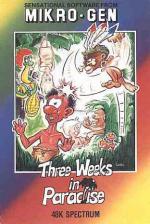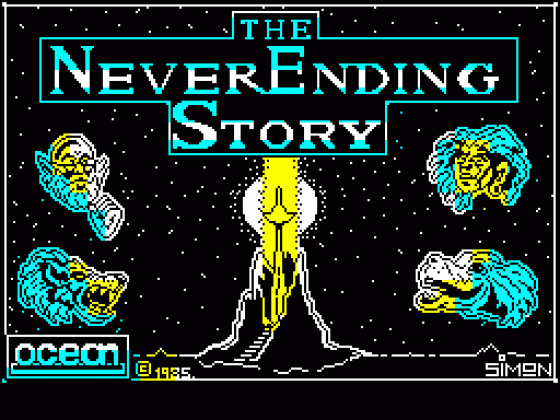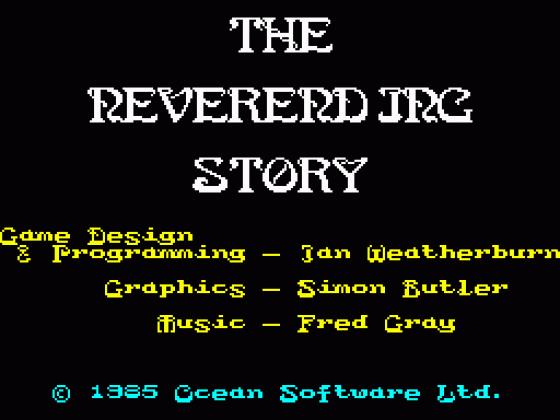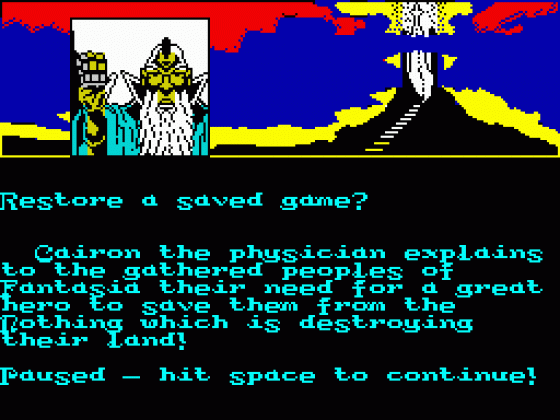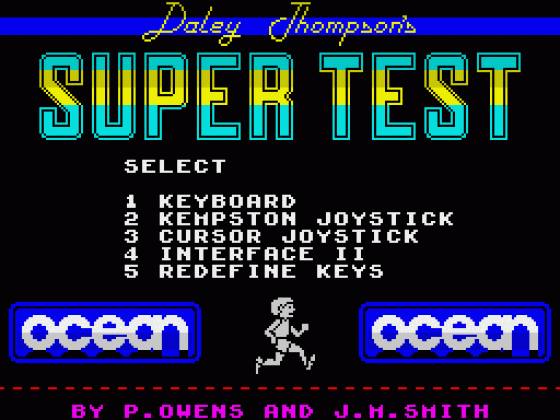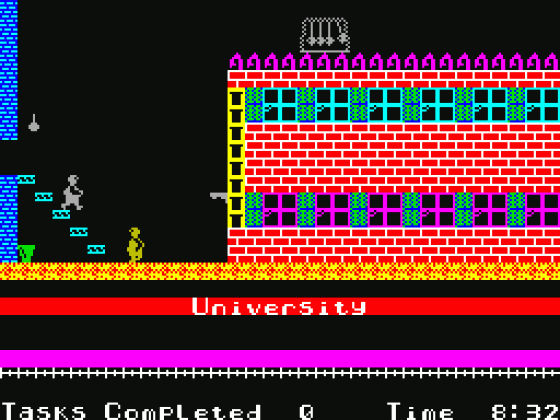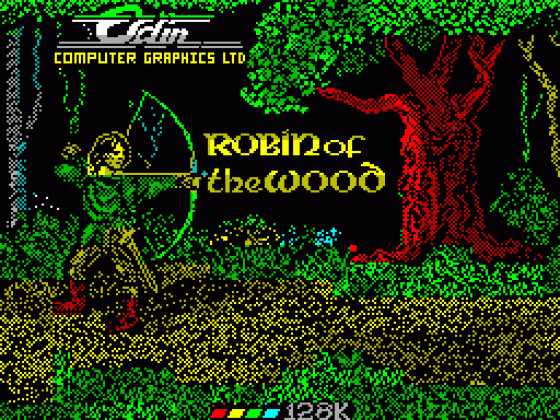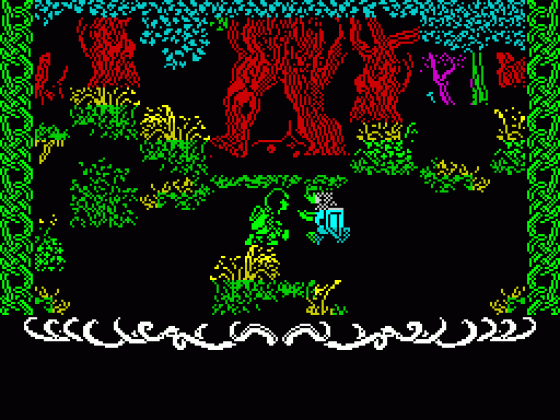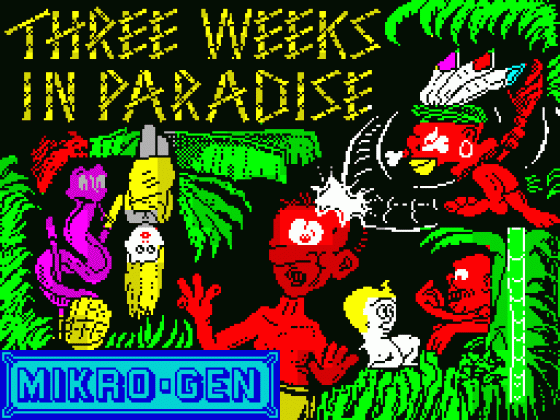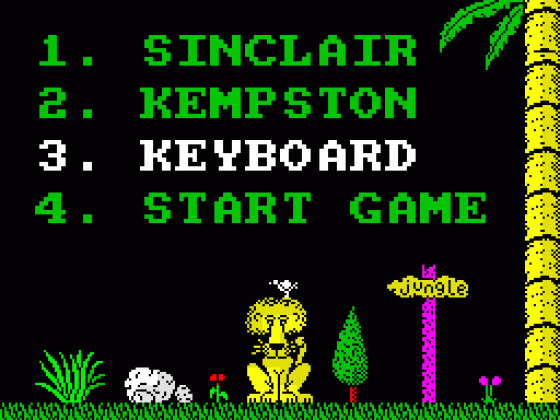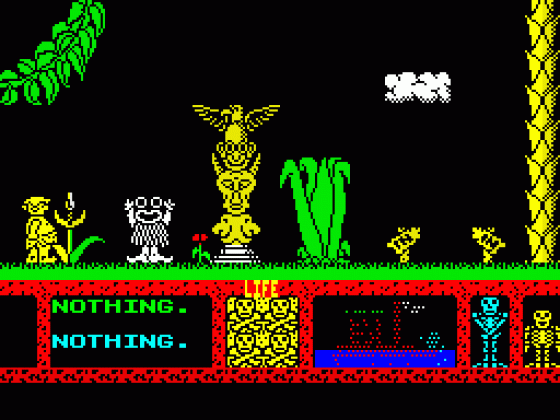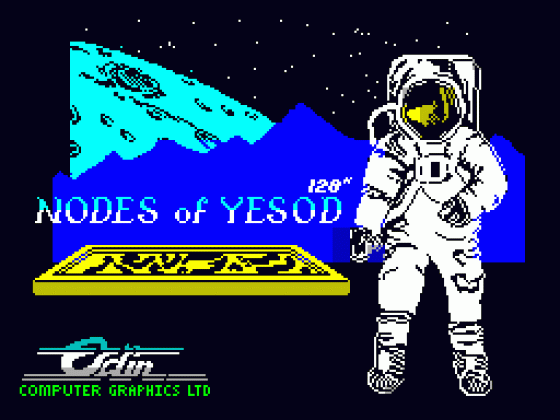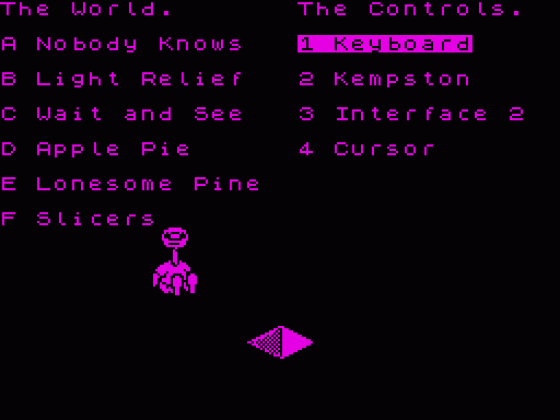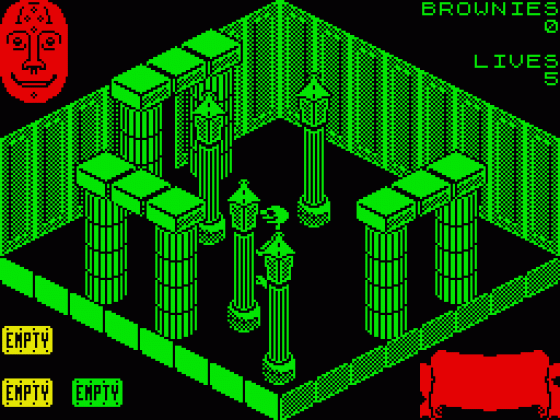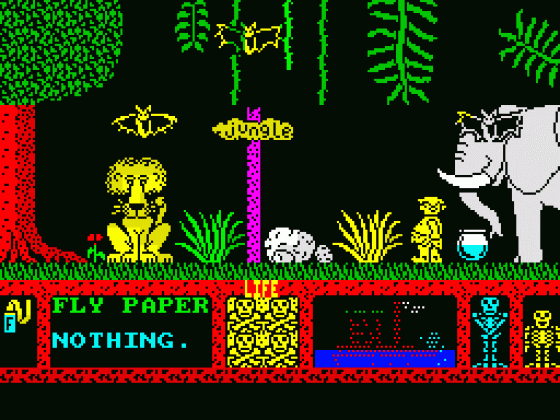
ZX Computing
 1st April 1986
1st April 1986
Publisher: Mikro-Gen
Machine: Spectrum 48K/128K
Published in ZX Computing #24
Feverish production of new games for a new machine
Games For The Spectrum 128
The Spectrum 128s that were ghosted into software houses around the country during the past few months came out into the open at the official 128 launch. Programmers have been feverishly preparing games to ensure the machine has credible software support. Despite assurances that 48 games run on the 128, to potential buyers this may seem like fitting a moped engine into a Ferrari. Compatibility is of course an asset but the machine's viability rests on the utilisation of its added features for games writing.
The software houses have come up with a miscellany of revamped classics using the 128's new capabilities to varying degrees. Games written specifically for the 128 are in the pipeline but the first offerings are reviewed below.
Neverending Story
The first adventure game to appear for the 128 comes bundled with the machine when you buy it. The original 48K version had to be loaded in three sections, but now with the 128's extra memory the whole game loads in one long chunk.
Set in the land of Fantasia, which is being threatened by the menace of The Nothing, you play the part of the young hero Atreyu, who is the only one that can conquer The Nothing. The characters that Atreyu will come across are all similar to the characters from the film, the huge Rockbiter, Teenyweeny and Nighthob, who will all aid him in his quest, and others like Gmork who is in the service of The Nothing and will do all he can to stop Atreyu.
The graphics in Neverending Story are cleverly used; as you progress through the game, there are pictures of the main locations over which smaller illustrations are super-imposed. These show the objects you are carrying and any characters that you may meet, and just for once these graphics do enhance the game rather than just replacing text.
The text input isn't quite as friendly as it could be (and doesn't even seem to accept 'examine'), but I still found it sufficently flexible to allow me to try most things that I wanted. Neverending Story may not be a classic adventure, but for the 128 owner who's into adventures it will come as a nice extra with the machine.
Daley Thompson Super-Test
To force home the point that the 128 is intended as a games machine, Sinclair have included Daley Thompson's Super Test with the machine. To add to the key battering strain of the original Ocean have extended the program to include four more events, 100m Sprint, Javelin, Triple Jump and Hurdles.
As before, timing and sustained attacks on the keyboard/joystick are the key to success and with improved graphics and sound effects the twelve event package represents good value, even though it costs £2 extra than the 48K version.
Technician Ted: Mega-Mix
Hewson's everyday story of life of a silicon chip factory has been overhauled for the 128 to take full advantage of the sound chip and increased memory.
The Mega Mix contains 100 screens, twice the number of the original and music plays throughout, beginning with a Viennese waltz to accompany the loading screen and moving onto a rousing march to get you in the mood for Ted's Quest to complete his daily tasks.
With so many more locations, the gameplay is different so that Technician Ted in the 128 version can be considered almost as a new game rather than just a cosmetic enhancement of the 48K program. Technician Ted, harassed by lethal C5's, floating heads and viciously rotating keys seems set to persuade a new wave of converts to clock on to this addictive platform foray.
Robin Of The Wood
"Can you help Robin in his quest to find the silver arrow?" asks a voice issuing from the Spectrum. Speech on the Spectrum 128 is impressive enough but Odin have gone on to add a number of deft touches to Robin Of The Wood that make it a pure pleasure to play.
A jaunty medieval tune plays throughout the game, only interrupted when you have felled one of the Sheriff's men with your trusty staff. Your reward is a quick burst of the traditional Robin ditty (usually associated with arrows embedded and twanging in a tree) before the theme music smoothly takes over again.
Another nice feature is revealed when Robin is being given a hard time by the Sheriff's men. "Give me a chance," he pleads as another arrow hits him.
With its superior graphics, smooth animation and sound effects, Robin Of The Wood shows that Odin are among the front runners in using the potential of the 128.
Three Weeks In Paradise
Wally's jungle jaunt to rescue Wilma and Herbert from the cannibals has been expanded for the 128 to incorporate some new sequences, improved graphics and music.
The graphics themselves are impressive with each successive screen more crowded with features and perils than the last. There do however, appear to be problems with colour smudge on our copy. The capability for sound has been used to produce only a rather weak theme tune which, although apt for the game setting, will not exactly set the pulse racing.
Despite the quibbles, Three Weeks In Paradise is an enjoyable enough Wally adventure and contains enough problems to keep you intent on saving Wilma and Herbert from becoming the cannibals' main course.
Nodes Of Yesod
The main difference between this and the 48K version of Nodes is not the size of the game, but the excellent speech synthesis that has been made possible by the 128's new sound chip. The game begins with "Welcome to The Nodes of Yesod, from the Odin Computer Graphics Team" - speech as good as I've heard on any home computer.
The game itself is the same as the original version, in which you must help Charlie Fotheringham-Grunes locate the eight keys which will allow him to enter a cavern beneath the moon's surface where lurks a great monolith which is sending out signals to potential alien invaders. But now, in addition to the excellent animation and maze of monster-infested lunar caverns, the game boasts a continuous and quite atmospheric soundtrack, as well as the occasional spot of speech synthesis such as 'Your energy is running low' or 'Ouch' when you fall from a height.
Like Sweevo's World, this was an excellent and addictive game when released for the 48K Spectrum, and the addition of sound has only improved it. Mind you, it would have been good to see some of the memory used to expand the number of playing screens which, as far as I can tell, remains the same.
Sweevo's Whirled!
The original version of Sweevo's World would probably have gotten a ZX Monster Hit if they had existed at the time the game was released, so the 128 version starts off with a good pedigree behind it.
The basic plot of the game remains the same; you must guide Sweevo around the rooms of an asteroid inhabited by all sorts of insane creatures, geese and brownies, Horrid Little Girls, deadly fruit and collapsing weights. The humour and strangeness of the obstacles were what made Sweevo's World stand out from the recent spate of Knightlore clones, and of course with an extra 80K of memory to play with, it's all still there, plus lots more. The game now contains 250 rooms as well as having enhanced sound.
The number of sections in the game has been increased, so that, instead of starting in places like Lonesome Pine and Really Free, you can now add to that lst Nobody Nose (a group of rooms inhabited by deadly noses!) and several others. It would have been nice to have continual music rather than just the tune at the beginning, but Sweevo is still one of the most enjoyable games currently available on the Spectrum (48 or 128K).

